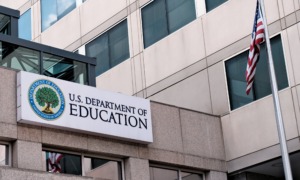Author(s): Campaign for Youth Justice (CFYJ)
- Jeree Thomas – Policy Director
Published: Oct. 11, 2017
Report Intro/Brief:
“Since 2005, 36 states and the District of Columbia have passed 70 laws to reduce the number of youth prosecuted, tried, and incarcerated in the adult system. Since 2011, CFYJ has reported on trends across the nation, celebrating the reforms and progress made in treating children in a developmentally appropriate way. This report tracks reform trends from January 2015 to August 2017.
2015-2017 State Legislative Reforms that Remove Youth from the Adult Criminal Justice System:
Trend 1: Four states have passed laws to raise the age of juvenile court jurisdiction so that 16- and/or 17-year-olds are not automatically prosecuted as adults. (Louisiana, New York, North Carolina, South Carolina)
Trend 2: Nine states and the District of Columbia have passed laws limiting the housing of youth in adult jails and prisons. (Arizona, Kansas, Maryland, Montana, New York, New Jersey, Oregon, Vermont, Washington)
Trend 3: Eight states have limited the pathways of transfer or created ways for youth to return to the juvenile court. (Connecticut, California, Delaware, Illinois, Kansas, New Jersey, Texas, Vermont)
Trend 4: Five states have restored judicial discretion on transfer decisions by shifting power from prosecutors or state legislatures to judges. (California, Illinois, Indiana, Utah, Vermont)
Thanks to a number of campaign coalitions, outspoken youth and family members, and tenacious legislators, many more youth were removed from the adult system from 2015 to 2017. Nineteen states and the District of Columbia changed their laws in the past two years. Raise the age momentum has had the most significant impact on the total numbers of youth in adult court, jails, and prisons, but these efforts have only blocked pathways to the adult system for some youth, primarily with low-level offenses. Looking forward, efforts to block youth from the adult system must focus on how to best serve, support, and rehabilitate all youth, including those charged with serious offenses. Without a comprehensive strategy to serve these youth outside of the adult criminal justice system, the society will continue to pay the financial, social, and public safety costs of high unemployment and high recidivism rates when these youth return to their communities in their 20s or early 30s. It is in the best interest of these youth, our communities, and law enforcement professionals that federal, state, and local governments fund evidence-based prevention and intervention efforts that will rehabilitate youth in their homes and communities rather than further criminalize and traumatize youth in adult jails and prisons.”































